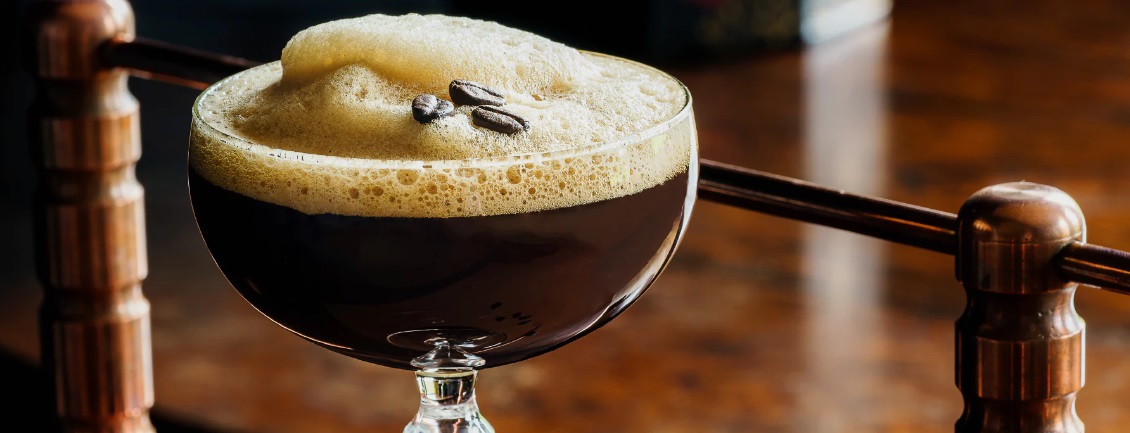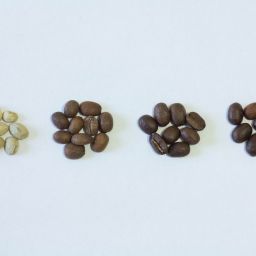
The espresso martini is a captivating cocktail that combines the rich, bold flavors of coffee with the smoothness of vodka, often sweetened with coffee liqueur.
Its creation is attributed to the innovative spirit of the late 20th century’s cocktail culture. Beyond its alluring taste, the garnish of three coffee beans floating atop its creamy foam layer piques the curiosity of many.
This garnish is not merely decorative but carries a depth of meaning that spans cultural and historical significance.
The Origin of Espresso Martini
The espresso martini was conceived in the 1980s by the celebrated bartender Dick Bradsell. According to lore, it was created in a London cocktail bar at the request of a famous model who sought something to “wake her up and f*** her up.”
Bradsell responded with this now-iconic concoction, which initially bore the name “Vodka Espresso.” Over time, it evolved into the espresso martini, gaining worldwide popularity for its unique ability to energize and entice in equal measure.
The drink reflects the era’s experimental approach to cocktail making, blending traditional elements with new, vibrant flavors.
Significance of the Three Coffee Beans
The trio of coffee beans adorning an espresso martini is rich in symbolism. Firstly, they represent the wishes of health, wealth, and happiness for the person enjoying the drink. This trio of values offers a toast to a life well-lived, encapsulating universal desires across cultures.
In some interpretations, the beans are seen as a nod to the Holy Trinity, carrying a spiritual dimension that transcends the drink’s immediate sensory pleasures.
This religious allusion enriches the cocktail with a layer of sacred significance, merging the secular with the divine.
Furthermore, the three beans symbolize the global journey of coffee, highlighting its roots in Africa, Central and South America, and Asia.
These regions are pivotal to the world’s coffee production, and their representation in the garnish underscores the espresso martini’s homage to the global coffee culture.
Through this symbolic garnish, the drink connects drinkers to the broader narrative of coffee, from its cultivation and harvest to its role in fostering social and cultural connections worldwide.
Cultural Significance
The symbolism of the three coffee beans garnishing an espresso martini transcends geographical boundaries, with each culture infusing its unique interpretation into this cocktail tradition.
In Italian culture, for instance, the concept of “Sambuca con la Mosca,” which translates to “Sambuca with flies,” uses three coffee beans to represent health, wealth, and happiness, mirroring the espresso martini’s symbolism.
This shared tradition showcases the universal appeal of using coffee beans as symbols of well-being and prosperity.
Other cultures might interpret the beans through lenses of local beliefs and customs, further enriching the drink’s narrative and embedding it within a global tapestry of cocktail traditions.
The Espresso Martini in Modern Times
The espresso martini has experienced a resurgence in popularity, thanks in part to the craft cocktail movement and a renewed interest in coffee culture.
Modern bartenders have embraced the classic recipe, introducing innovative variations that cater to contemporary tastes.
These include using cold brew coffee for a smoother taste, incorporating flavored liqueurs, or even experimenting with non-dairy milks for a vegan twist.
The cocktail’s versatility and the energy it provides continue to make it a favorite choice for both coffee and cocktail enthusiasts alike.
How to Properly Garnish an Espresso Martini
Garnishing an espresso martini with the traditional three coffee beans is a simple yet crucial step in its presentation. Here’s how to do it right:
- Prepare your espresso martini and pour it into a chilled martini glass.
- Select three whole coffee beans. While any type of bean can be used, choosing beans that reflect the coffee’s origin or the drinker’s personal preference can add a meaningful touch.
- Carefully place the beans on the surface of the drink’s foam in a triangle formation. This not only ensures aesthetic appeal but also honors the symbolic intent behind the garnish.
The visual appeal of the three coffee beans, coupled with their symbolic meanings, enhances the overall drinking experience, adding a layer of depth and tradition to every sip.
FAQs
What do the three beans in an espresso martini symbolize?
The three coffee beans traditionally symbolize health, wealth, and happiness. Some interpretations also see them as a nod to the Holy Trinity or the major coffee-producing regions of the world.
Can I use any type of coffee bean for the espresso martini garnish?
Yes, any type of coffee bean can be used for garnishing an espresso martini. The choice of bean can reflect personal taste preferences or the specific flavors of the cocktail.
Is the espresso martini a true martini?
While not a martini in the traditional sense, which is made with gin and vermouth, the espresso martini falls into the category of modern martinis.
It’s a cocktail that utilizes vodka and espresso, showcasing the adaptability of the martini format to contemporary tastes.
Conclusion
The espresso martini, with its signature garnish of three coffee beans, stands as a testament to the cocktail’s rich cultural and symbolic heritage.
This garnish, embodying wishes of health, wealth, and happiness, adds a layer of meaning that transcends the drink’s immediate appeal.
The cocktail’s evolution and enduring popularity highlight its versatility and the universal allure of coffee.
As the espresso martini continues to inspire modern variations, its core essence—a celebration of life’s simple pleasures through the union of coffee and spirits—remains unchanged, solidifying its status as a beloved classic in the world of cocktails.








